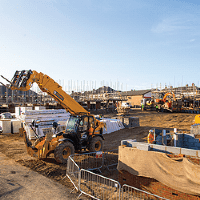■ Housing assessments must reflect true need: under proposals, councils must provide up-to-date local plans based on an ‘honest assessment’ of housing need. We think that the Government stated aim to deliver one million homes in this parliament is not enough. England needs around 300,000 new homes a year and a truly honest assessment by each local authority would have to add up to this number or more to address the shortfall. Our analysis suggests that the sum of current housing needs assessments across the country are 25% short of true housing need.
■ A robust standardised assessment is needed: the standardised method for assessing housing need recommended by the Local Housing Plans Expert Group is a step forward but does not go far enough. We have outlined a simpler system which delivers a higher housing needs assessment in the most unaffordable markets. The new methodology is to be introduced by March 2018.
■ Targets in Local Plans must meet objectively assessed need: housing supply will only meet need if up-to-date local plans add up to assessed need across an economic area. Across the 123 authorities with a post-NPPF plan in place and an up-to-date housing needs assessment, housing targets fall 16% below objectively assessed need. The biggest gaps are in Broxtowe, Gosport, Hertsmere, Nottingham and Watford. The effect of the combined effect of an underestimate of need and target set, means that we are planning for 37% fewer homes than needed.
■ Working across political boundaries: the Housing White Paper concedes that the “Duty to Co-operate”, which places a legal duty on councils to engage with neighbouring authorities to maximise the power of Local Plans, has not worked effectively. Proposals seek to strengthen the NPPF by requiring authorities to demonstrate a clear strategy to meet local needs as well as any needs that genuinely cannot be met within neighbouring authorities. It is critical that this works effectively in the future.
■ More support for strategic planning at a strategic level: the Housing White Paper allows neighbouring local authorities to act together to produce a single Local Plan for their combined area. It also allows combined local authorities or elected Mayors to produce Spatial Development Strategies, with the proposed ability to allocate strategic sites. The success of this policy will depend on its practical application.
■ Delivering Local Plans: only 38% of English local authorities outside London have an NPPF compliant plan. 5% have yet to start. A standardised approach to objectively assessed need and allowing local authorities to increase planning fees to support resources will help improve performance.
■ Delivery tested against targets: councils will be held to account through a new ‘housing delivery test’ which will highlight whether house building is meeting housing requirements and from November 2018, apply “the presumption in favour of sustainable development” if delivery falls below 25% of housing requirement. The threshold rises to 65% from November 2020. This co-ordinated approach should help achieve higher delivery numbers. However, measures will put greater pressure on local authorities.
■ Build to Rent given a boost: there is a separate consultation on BTR. Proposed measures place emphasis on BTR through planning policy, requiring local authorities to plan proactively where there is an identifiable need. Our analysis shows that if pro-active planning for BTR is aimed at large sites, it will accelerate housing supply by as much as three-fold without displacing homes built for other tenures.
■ Higher expectations of developers to speed up delivery: planning permissions will be much more focussed on build out speed with timing and pace of delivery monitored against Plan targets. This could mean the start of a new approach to planning whereby the speed of build out is a factor to be considered in land promotion, acquisition and likelihood of gaining planning consent.
